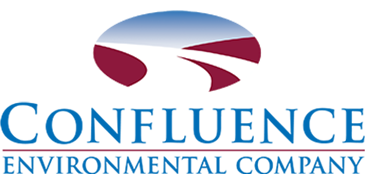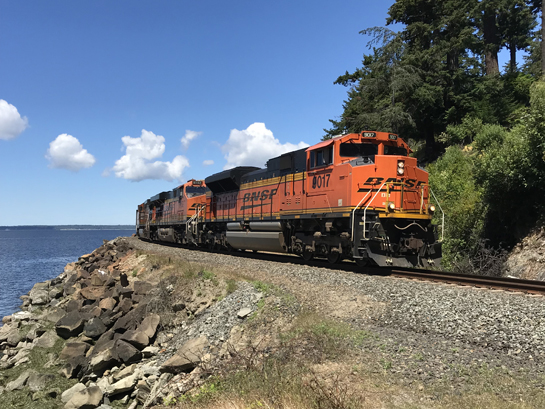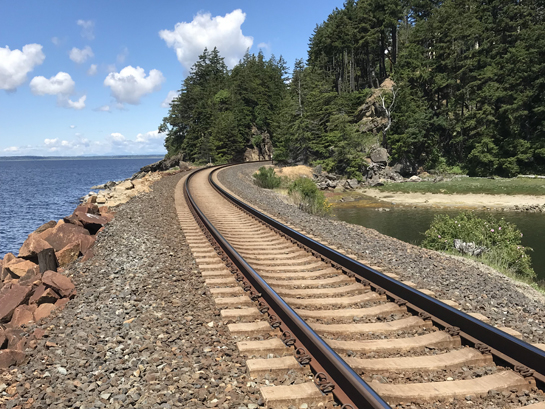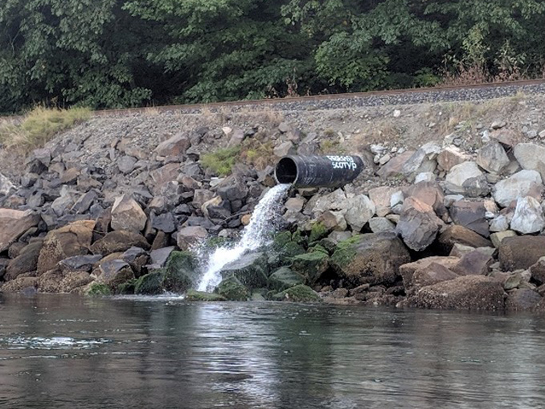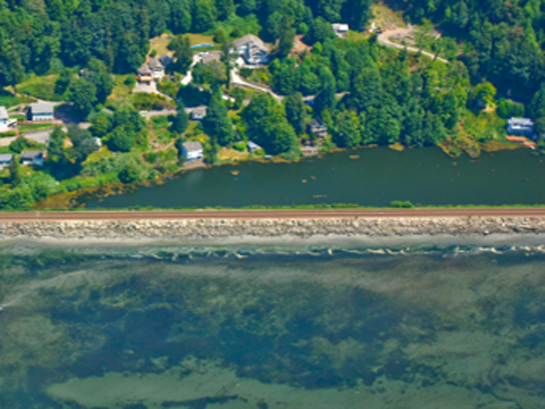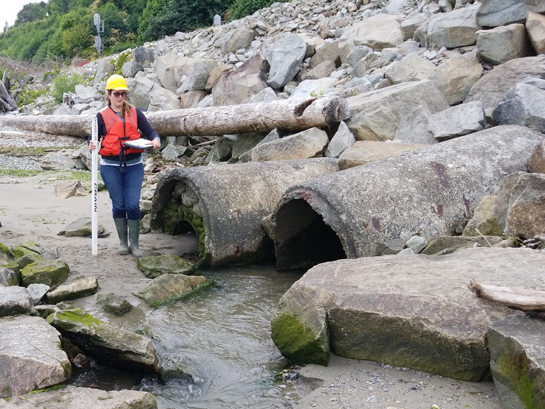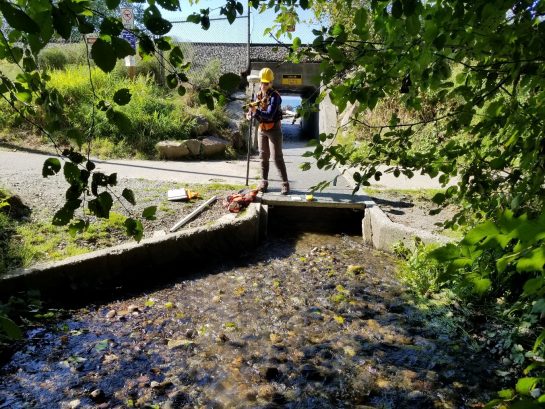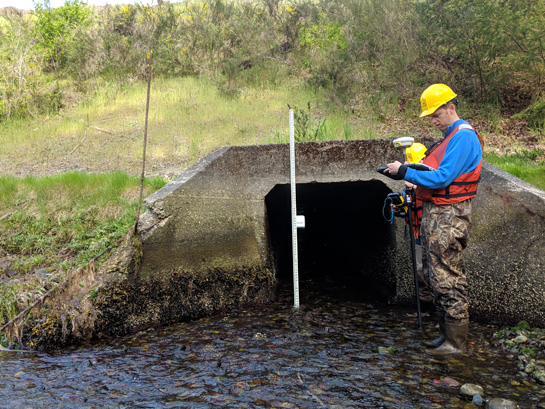As part of a multi-entity team, Confluence has completed the first 2 phases of this grant-funded project – managed by the Tulalip Tribes – to restore nearshore habitat in Puget Sound along 73 miles of Burlington Northern and Sante Fe (BNSF) rail line between Olympia and Blaine, Washington. The latest deliverables included preliminary restoration designs for 3 high-priority stream crossings of the railway.
Rail construction has divided coastal habitats from the nearshore, limiting movement of fish and disrupting natural habitat-forming processes. The impact to sensitive species such as Chinook salmon and Southern Resident killer whales has been significant. The goal of this multi-phase project is to develop a prioritization framework that guides implementation of projects that restore fish passage and create habitat in critical coastal areas along railroad-impacted shoreline. The project approach includes consideration of local and regional restorations objectives, with the goal of improving the ability of funders to evaluate the benefits among restoration projects, as well as inform mitigation planning along the railroad.
Confluence’s Phil Bloch led the work to identify all locations where streams cross the BNSF Railway along the Salish Sea shoreline between Olympia and Canada. He led the survey of culverts and in-field assessment of culvert conditions and adjacent habitat for 196 stream crossing structures and 13 embayments. The project team created and applied a site prioritization framework that identified stream or embayment habitat priorities for Chinook salmon. Prioritization was based on likelihood of use by juvenile Chinook salmon and quality of upstream habitat. The project team identified 44 streams and 7 embayments as highest priority.
Product deliverables in the first phase included a GIS database containing new spatial data, field inventory information, and prioritization scores for stream crossings and embayments. Phil led coordination with lead entities, tribes, regulatory agencies and the Puget Sound Partnership to promote culvert improvements. In the recently completed second phase of the project, Phil worked with local restoration partners and BNSF to initiate implementation of stream and stream crossing restoration actions, develop preliminary designs for 3 high-priority stream crossings, and identify programmatic designs and permit strategies for all stream crossings based on characteristics of the stream crossing including small culverts, large culverts, and spanning structures to restore fish passage and stream function. The next phase will involve completing design and permitting of replacement structures and seeking funding to implement the restoration projects.
The Confluence-led project team included Environmental Science Associates, the Tulalip Tribes, Shannon & Wilson, and Hanson Professional Services. Staff at Coastal Geologic Services contributed to the first phase of the project. BNSF provided strategic and safety guidance, and access to sites. An advisory panel included the Washington departments of Fish and Wildlife and Ecology, Snohomish County, and the South Puget Sound Salmon Enhancement Group. More information about this important work can be seen at the following sites:
Project Location
Olympia to Blaine, WA
Client
The Tulalip Tribes
Funding Source
Puget Sound National Estuary Program
Project Timeline
Ongoing since 2018
